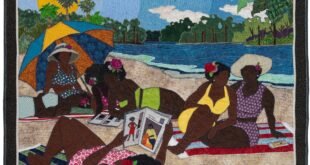Watching the first two seasons of the documentary comedy series How To with John Wilson, I have seen beloved actor Kyle MacLachlan struggle to swipe a subway card and a personal friend discuss the difficulty of getting rid of old batteries and letting go of her wedding rings. In the upcoming third and final season, I was astonished to see a doctor I had booked for a consultation talk about something he calls “Hampton’s bladder.” An independent Vimeo oddball filmmaker turned unlikely HBO showrunner, John Wilson has become a leading chronicler of contemporary New York. For all the character that the city has lost to gentrification, How To demonstrates how much delightful strangeness can still be found here.
It’s difficult to capture the show’s singular sensibility in words. Wilson edits together a truly daunting amount of street footage with various interviews he shoots around town, creating explorations of episodic themes that often veer in wildly unpredictable directions. His shaky narration, full of ums and uhs and awkward pauses, gives each installment almost a stream-of-consciousness quality. The new season starts with Wilson comparing “your relationship with your toilet” to a romance, complete with various shots of couples kissing that escalate slowly from typical to unusual.
The title of that episode is “How To Find a Public Restroom,” and the seemingly superficial topic at hand masks a serious look into the intersection of urban infrastructure and social safety. There aren’t many public restrooms in NYC; while a shot of a man urinating out the door of a moving subway car is funny, it also speaks to a dire societal problem. Every episode of the show could be summed up with a more elemental theme. “How To Cover Your Furniture” is about security. “How To Cook the Perfect Risotto,” which observes the onset of the COVID-19 pandemic, is about mortality. “How To Throw Out Your Batteries” is about letting go.

“How To Find a Public Restroom” becomes a meditation on how people try to feel at ease. Wilson’s investigation into the subject leads him to “The Hole,” a badly neglected neighborhood that lacks basic plumbing because it’s below sea level. And yet people have adapted to live there. The episode also takes him on an ill-fated trip to Burning Man. Then he meets a couple who are turning a vacated missile silo into a living space. The specter of possible collapse looms in the background of the episode, the ever-present knowledge of how fragile our safety nets may really be; at one point Wilson digs up an unnerving computer-animated PSA about what a nuclear attack would do to New York.
How To excels at discovering vivid imagery that drastically upends everyday elements of life. Wilson is welcomed into a seemingly average apartment, only for the tenant to gesture to a window and show us that it looks directly onto the Myrtle-Broadway subway station platform. “I thought the curtains would help more than they did,” he deadpans. A convention for vintage vacuum cleaner collectors includes the amazing sight gag of a comically giant yet functional vacuum that astonishes everyone who sees it. The show demands attention like few others; you cannot have it on in the background while you do other things, lest you miss unforgettable images like a clear plastic storage bin full of an unidentifiable green liquid sitting on a sidewalk.
As the show approaches its end, this season sees Wilson interrogate his own methods and relationship to the viewer. The penultimate episode lays bare how much work goes into the series’ apparent spontaneity. It’s a useful reminder of the power of selective framing and careful editing in nonfiction filmmaking. Ultimately, How To‘s underlying message is that there’s no such thing as a boring person or day. All it takes to discover something weird and fascinating is to pay attention.

Season 3 of How To with John Wilson is currently streaming on Max.
Source link

